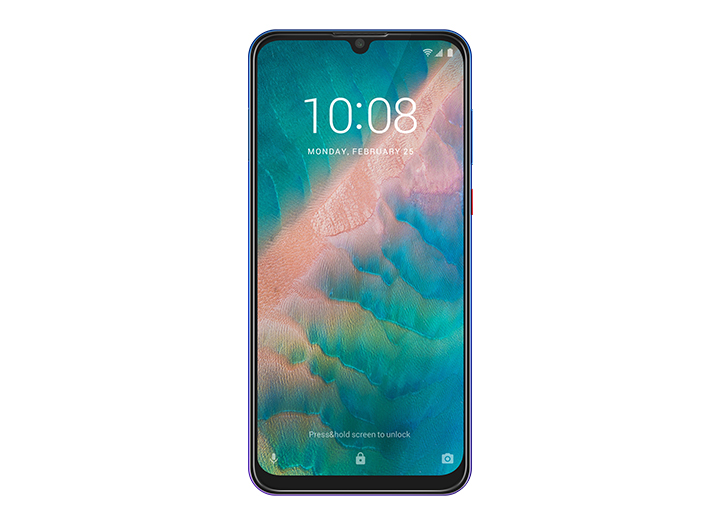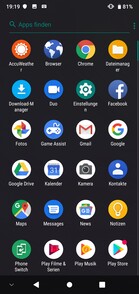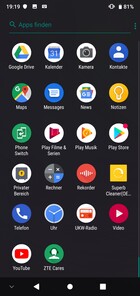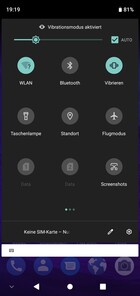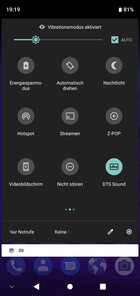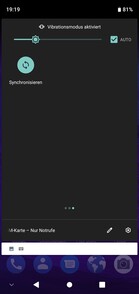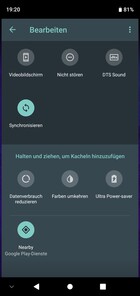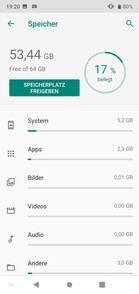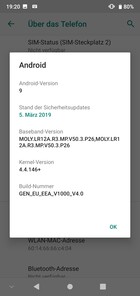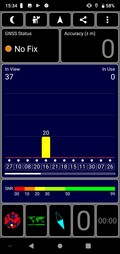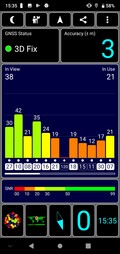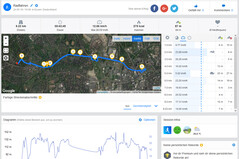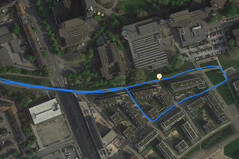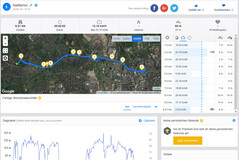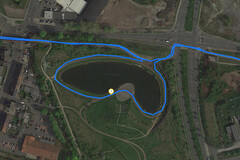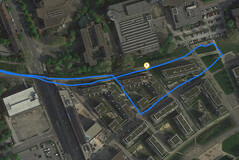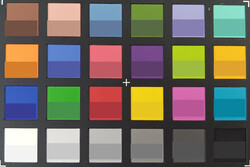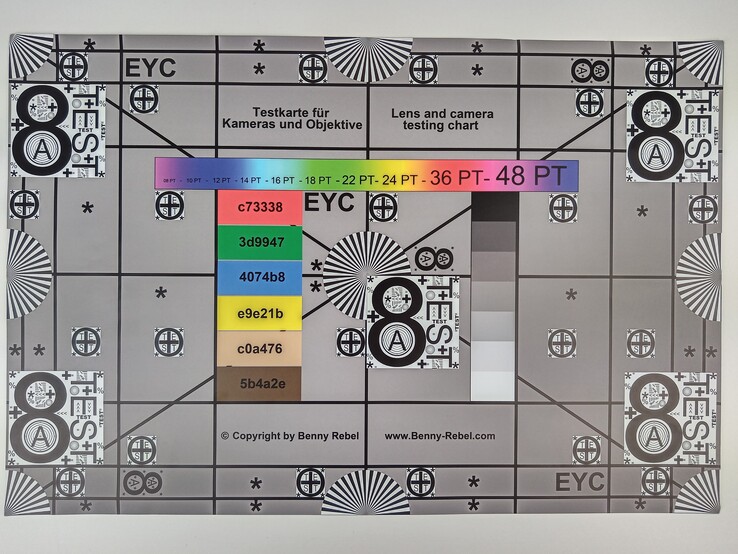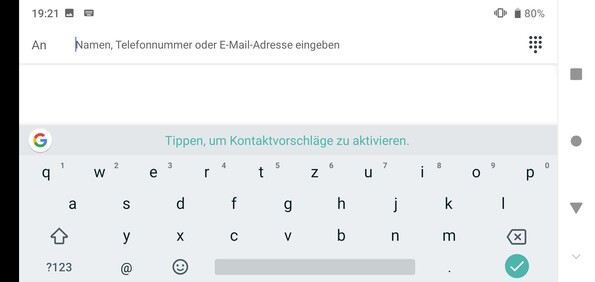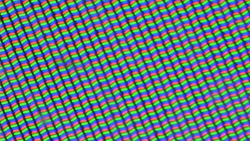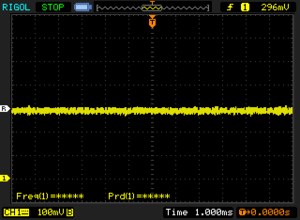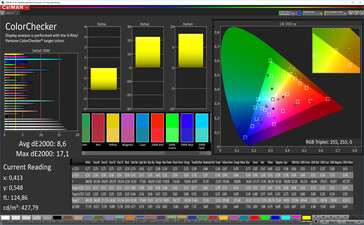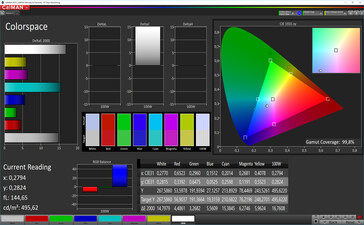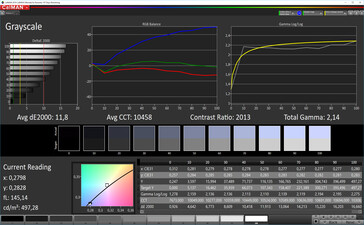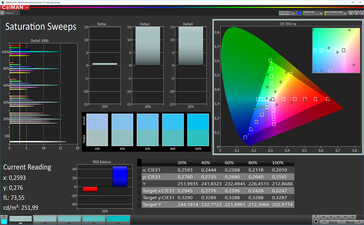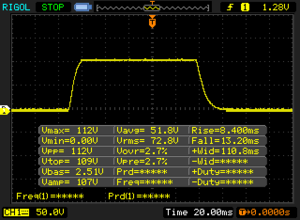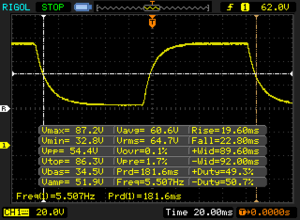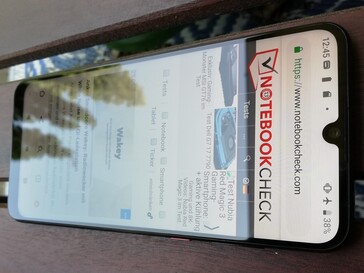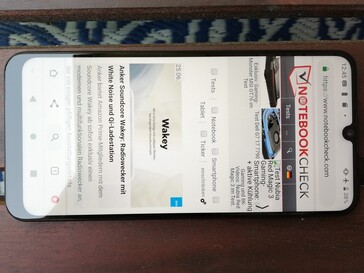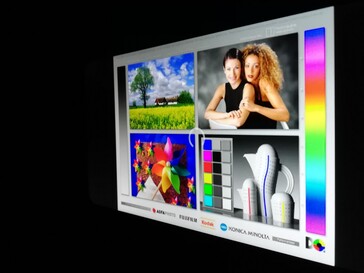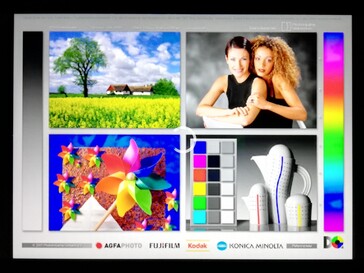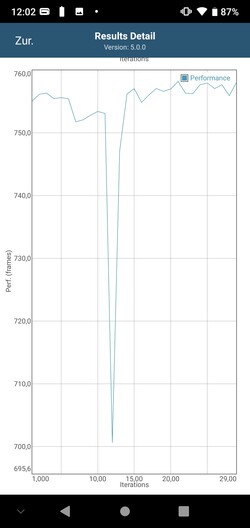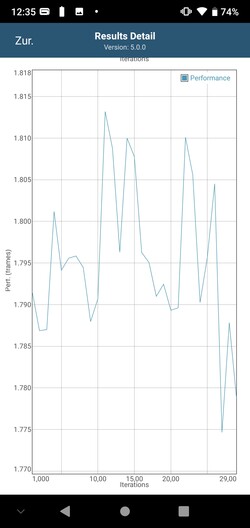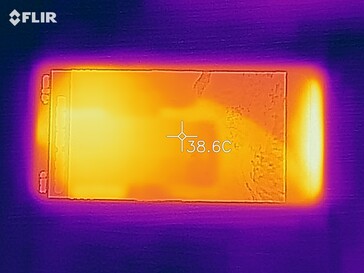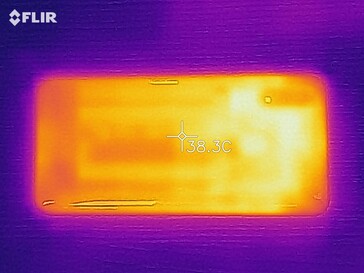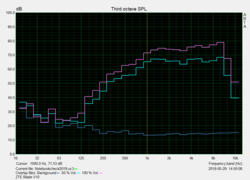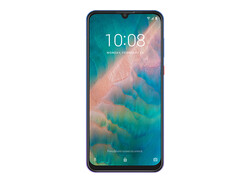ZTE Blade V10 Smartphone Review: Chinese smartphone offers great selfie camera

We first started reviewing ZTE Blade smartphones with the ZTE Blade V6. Looking back, we can see that the manufacturer has continuously tried to improve every iteration based on criticism of the previous version. All these smartphones share their affordable price and a rather average system performance. Again, the Blade V10 does not support NFC.
The included hardware fits in with the image of a mid-range smartphone. The Blade V10 is equipped with a Mediatek Helio P70 and 4 GB of RAM. Graphics are taken care of by an ARM Mali G72 MP3 and the 64-GB eMMC flash storage offers sufficient storage space for installing applications.
At a price of around $280 (~250 Euros), the ZTE Blade V10 has to face up to a wide range of competitors. We have therefore decided to compare the affordable Chinese smartphone with the Samsung Galaxy A40, the Sony Xperia L3, the Wikos View 3 Pro and the Xiaomi Redmi Note 7 as well as with its predecessor. You can also add any smartphone from our database at the bottom of each comparison table.
Case - solid Android smartphone
The ZTE Blade V10 has a metal frame and appears to be well made. The back camera and the fingerprint reader are positioned in the top third of the back, which is made to look like porcelain using a multi-layered production process. The look and feel of the surface still remind us of plastic, however. The physical buttons are positioned on the right side of the device. Our test unit does not have any visible defects. The front of the device is covered by a very large display with a screen-to-body ratio of 90.3 percent. The display also features a small waterdrop notch.
At 153 grams (~5.4 oz) the Blade V10 can be considered comparably light. Its weight is average compared to today's competition. The phone's dimensions are on the larger side due to the 6.3-inch display. As by now most other manufacturers also use a bezel-less design, the ZTE smartphone cannot really set itself apart here.
Connectivity - no NFC in the ZTE Blade V10
The ZTE Blade V10 is equipped with a mid-range SoC, the Mediatek Helio P70, and an ARM Mali G72 MP3, which takes care of the graphics department. These chips can work with 4 GB of RAM and 64 GB of eMMC flash storage. The latter can be expanded by up to 256 GB using a microSD card. However, using an SD card means giving up the option of having a second SIM card as this slot functions as a hybrid and can take either two NanoSIM cards (DualSIM functionality) or one SIM card and one microSD card. Both SIM slots support LTE and VoLTE and VoWiFi (provided the user's provider supports these functions).
Data can be transferred via the device's USB Type C port, which uses the USB 2.0 standard. The 3.5 mm audio jack can be used to connect headsets or external speakers. Users who like to stream content will have to manage without Full HD content on Netflix, Hulu and Amazon Prime as the device does not support DRM Widevine L1. Camera2 API is set to "full" and is somewhat limited.
Software - affordable smartphone with Android Pie
Users of the ZTE Blade V10 will be using Android Pie (Version 9.0). The current security patches are dated March 5th, 2019. The user interface is based on pure Android, although ZTE has created its own standard browser. There are also some additional apps such as ZTE Care and Phone Switch, that offer supporting functions and enable you to migrate data from your old smartphone. The Superb Cleaner app (OEM) offers a system tool with which you can remove unnecessary data and free up some storage.
The settings menu of the ZTE smartphone does not support accounts for several users and it is not possible to install apps onto the microSD card either. The latter can, however, be formatted as internal storage in which case apps can be stored there.
Communication and GPS - ZTE smartphone with precise positioning
The ZTE Blade V10 supports cellular connection in GSM, 3G and LTE networks. The latter is supported up to category 7 which enables download speeds of up to 300 MBit/s and upload speeds of up to 100 MBit/s. At close range, users can use Bluetooth 4.2 and Wi-Fi with the standards 802.11 a, b, g, n and ac.
The ZTE Blade V10 reached average speeds of 325 MBit/s (receiving) and 305 MBit/s (transmitting) in our Wi-Fi test with our reference router Linksys EA8500. This positions the Chinese smartphone in the top mid-range of our comparison field.
| Networking | |
| iperf3 transmit AX12 (sort by value) | |
| ZTE Blade V10 | |
| Samsung Galaxy A40 | |
| Xiaomi Redmi Note 7 | |
| Sony Xperia L3 | |
| Wiko View 3 Pro | |
| iperf3 receive AX12 (sort by value) | |
| ZTE Blade V10 | |
| Samsung Galaxy A40 | |
| Xiaomi Redmi Note 7 | |
| Sony Xperia L3 | |
| Wiko View 3 Pro | |
The GPS test app helps us measure how well the ZTE Blade V10 can locate its own position. The affordable smartphone has GPS, Beidou, SBAS and GLONASS available for this purpose and manages to position us within three meters (~10 ft) outdoors. The Blade V10 does not manage to establish a stable satellite connection indoors.
We took the Blade V10 on our obligatory bike tour to compare its navigation capabilities to our reference device, the Garmin Edge 500. The recorded route shows slight deviations on long, straight stretches while curves are recorded precisely. The smartphone has no difficulty following sudden changes in direction, either. The ZTE Blade V10 can therefore be considered suitable for uses with a medium demand for positioning capabilities.
Telephone and Voice Quality - good connection on the Blade V10
Users of the Blade V10 can use Google's standard telephony app. This offers direct access to the call log and enables users to quickly switch to the dial pad, too. Two further tabs give you access to your favorite contacts and a general contacts list. Telephoning with the ZTE smartphone offers users clear sound on both sides of the line. The volume is high enough for telephoning in slightly louder surroundings. Background noises are filtered out as long as they are not too overpowering.
Cameras - smartphone with strong selfie camera
ZTE has equipped the Blade V10 with a 13 + 5-MP camera on its back and a 32-MP selfie camera at the front. This can take good portrait photos, although colors appear somewhat light. Fine details and structures are separated from one-another, even when zooming in. Even motives with strong differences in brightness can be recorded accurately. The camera app enables users to change the outcome by manually adjusting brightness or activating various beautifying modes. There are also several color filters and an HDR mode. A portrait function activates a strong bokeh effect. However, no other effects (apart from the beautifier) can be used when taking bokeh photos.
The back camera of the Blade V10 can be used to create average-looking panorama images. Details become blurry even at small levels of zoom and uniform surfaces appear slightly grainy. However, the camera manages to balance out strong differences in brightness, in order to avoid particularly dark areas on the image. Close-up objects are sharp and colors are well delineated. However, the image becomes less sharp towards the edges and some areas look somewhat muddy. Motives are hardly visible in low lighting: Their outlines are only just about recognizable and colors are almost non-existent. Apart from the settings that are available both for the front and back camera, the result of the back camera can also be post-processed manually, for example by adjusting the ISO value, the exposure and white balance.
Videos taken with the Blade V10 are of a similar quality to our test photographs. Users can apply various color filters to their video and the image stabilizer balances out (light) camera shake. Users can also choose between 1080p, 720p or the MMS format. The device does not offer a high-framerate mode or similar.
The ColorChecker passport can be used to find out how well the camera reproduces colors. In our case, it turns out that all colors appear too light while dark grays appear even darker than they should.
We took a photo of our test chart with the Blade V10 under controlled lighting. The camera manages to catch a lot of details and structures remain quite recognizable. However, colors are too light and even appear washed out in the bottom corners. Only certain areas of the test chart with high contrast are visible in photos taken in low lighting. Colors can only be guessed at and fine structures are not recognizable.
Accessories and Warranty
The ZTE Blade V10 comes with a USB AC adapter plus a suitable USB Type C cable, a protective case made from silicone, a SIM tool and a stereo headset. The manufacturer does not have any more accessories available for the Blade V10.
Buyers of the Blade V10 are given a 24-month warranty.
Input Devices & Handling - reliable fingerprint reader
Users of the ZTE Blade V10 can use Google's standard keyboard app, GBoard, for typing. The keyboard is good enough to enable users to type long sentences quickly and easily. The touchscreen records every touch reliably and responds to inputs quickly. The screen surface does not offer ideal gliding properties, which can make drag-and-drop actions a little difficult to execute.
The smartphone can be unlocked with the help of the fingerprint reader on the back of the device. This recognizes stored fingerprints reliably and quickly unlocks the device. The gyroscope also responds reliably and quickly adjusts the screen orientation.
Display - large screen and good contrast
The screen of the ZTE Blade V10 consists of a 6.3-inch IPS panel with a resolution of 2280x1080 pixels. The brightness is in the top mid-range of our comparison field with an average of 485 cd/m². Brightness distribution is very good at 93 percent.
When the ambient light sensor is activated, the ZTE smartphone reaches a brightness of 472 cd/m². This result drops significantly in our APL50 test and brightness only reaches 380 cd/m² here. The lowest brightness level still has a luminosity of 5.11 cd/m². The Blade V10 does not use PWM to adjust screen brightness.
| |||||||||||||||||||||||||
Brightness Distribution: 93 %
Center on Battery: 492 cd/m²
Contrast: 1538:1 (Black: 0.32 cd/m²)
ΔE ColorChecker Calman: 8.6 | ∀{0.5-29.43 Ø4.77}
ΔE Greyscale Calman: 11.8 | ∀{0.09-98 Ø5}
99.8% sRGB (Calman 2D)
Gamma: 2.14
CCT: 10458 K
| ZTE Blade V10 IPS, 2280x1080, 6.3" | Samsung Galaxy A40 Super AMOLED, 2340x1080, 5.9" | Xiaomi Redmi Note 7 IPS, 2340x1080, 6.3" | Sony Xperia L3 IPS, 1440x720, 5.7" | Wiko View 3 Pro IPS, 2340x1080, 6.3" | ZTE Blade V9 IPS, 2160x1080, 5.7" | |
|---|---|---|---|---|---|---|
| Screen | 10% | 30% | 37% | 10% | -0% | |
| Brightness middle (cd/m²) | 492 | 358 -27% | 541 10% | 533 8% | 459 -7% | 459 -7% |
| Brightness (cd/m²) | 485 | 370 -24% | 540 11% | 533 10% | 450 -7% | 437 -10% |
| Brightness Distribution (%) | 93 | 94 1% | 91 -2% | 89 -4% | 90 -3% | 90 -3% |
| Black Level * (cd/m²) | 0.32 | 0.33 -3% | 0.25 22% | 0.39 -22% | 0.62 -94% | |
| Contrast (:1) | 1538 | 1639 7% | 2132 39% | 1177 -23% | 740 -52% | |
| Colorchecker dE 2000 * | 8.6 | 7.4 14% | 2.7 69% | 2.8 67% | 4.8 44% | 4.5 48% |
| Colorchecker dE 2000 max. * | 17.1 | 12.5 27% | 4.6 73% | 5.1 70% | 9.2 46% | 7.3 57% |
| Greyscale dE 2000 * | 11.8 | 4 66% | 3.1 74% | 1.9 84% | 5.5 53% | 4.9 58% |
| Gamma | 2.14 103% | 2.084 106% | 2.26 97% | 2.11 104% | 2.26 97% | 2.17 101% |
| CCT | 10458 62% | 7078 92% | 6853 95% | 6149 106% | 7494 87% | 7261 90% |
* ... smaller is better
Screen Flickering / PWM (Pulse-Width Modulation)
| Screen flickering / PWM not detected | |||
In comparison: 53 % of all tested devices do not use PWM to dim the display. If PWM was detected, an average of 8086 (minimum: 5 - maximum: 343500) Hz was measured. | |||
Our measurements show that the Blade V10 has a great contrast ratio of 1538:1 and an only slightly elevated black value of 0.32 cd/m². The results are the same in the APL50 test. This makes colors appear well defined. Black content appears to have a slight grey cast.
The CalMAN analysis also shows that the screen of the ZTE smartphone has a significant blue cast at factory settings. Users can adjust the colors in settings using the pre-defined modes "standard", "warm" or "cold" or otherwise using the freely adjustable scale.
Display Response Times
| ↔ Response Time Black to White | ||
|---|---|---|
| 21.6 ms ... rise ↗ and fall ↘ combined | ↗ 8.4 ms rise | |
| ↘ 13.2 ms fall | ||
| The screen shows good response rates in our tests, but may be too slow for competitive gamers. In comparison, all tested devices range from 0.1 (minimum) to 240 (maximum) ms. » 47 % of all devices are better. This means that the measured response time is similar to the average of all tested devices (20.2 ms). | ||
| ↔ Response Time 50% Grey to 80% Grey | ||
| 42.4 ms ... rise ↗ and fall ↘ combined | ↗ 19.6 ms rise | |
| ↘ 22.8 ms fall | ||
| The screen shows slow response rates in our tests and will be unsatisfactory for gamers. In comparison, all tested devices range from 0.165 (minimum) to 636 (maximum) ms. » 69 % of all devices are better. This means that the measured response time is worse than the average of all tested devices (31.6 ms). | ||
The IPS panel of the ZTE Blade V10 has very stable viewing angles. This means that screen content can be read from almost any angle without the image being distorted or colors appearing inverted. As long as there are no reflections, the affordable Android smartphone can be used in unusual positions.
Performance - mid-range smartphone with average performance
The ZTE Blade V10 is equipped with a Mediatek Helio P70 and an ARM Mali-G72 MP3. This is a typical hardware configuration for a mid-range smartphone. Combined with 4 GB of RAM and a 64-GB eMMC flash storage, the Android smartphone is suitable for most everyday activities and even supports apps with average graphics demands.
The benchmark results of our tests are varied. While the Blade V10 takes the lead in our PCMark Work 2.0 benchmark, its performance only positions it on second to last place in the graphically demanding GFXBench tests. The other tests place the ZTE phone in the mid-range of our comparison devices. The ZTE Blade V10 can easily outpace competitors such as the Samsung Galaxy A40 while being narrowly beaten by the Xiaomi Redmi Note 7.
| PCMark for Android | |
| Work performance score (sort by value) | |
| ZTE Blade V10 | |
| Samsung Galaxy A40 | |
| Xiaomi Redmi Note 7 | |
| Sony Xperia L3 | |
| Wiko View 3 Pro | |
| ZTE Blade V9 | |
| Average Mediatek Helio P70 (7160 - 11781, n=10) | |
| Work 2.0 performance score (sort by value) | |
| ZTE Blade V10 | |
| Samsung Galaxy A40 | |
| Xiaomi Redmi Note 7 | |
| Sony Xperia L3 | |
| Wiko View 3 Pro | |
| ZTE Blade V9 | |
| Average Mediatek Helio P70 (5992 - 8365, n=12) | |
| Basemark GPU 1.1 | |
| 1920x1080 Vulkan Medium Offscreen (sort by value) | |
| ZTE Blade V10 | |
| Samsung Galaxy A40 | |
| Vulkan Medium Native (sort by value) | |
| ZTE Blade V10 | |
| Samsung Galaxy A40 | |
| Average Mediatek Helio P70 (n=1) | |
| 1920x1080 OpenGL Medium Offscreen (sort by value) | |
| ZTE Blade V10 | |
| Samsung Galaxy A40 | |
| Average Mediatek Helio P70 (n=1) | |
| AnTuTu v7 - Total Score (sort by value) | |
| ZTE Blade V10 | |
| Samsung Galaxy A40 | |
| Xiaomi Redmi Note 7 | |
| Sony Xperia L3 | |
| Wiko View 3 Pro | |
| ZTE Blade V9 | |
| Average Mediatek Helio P70 (130058 - 148726, n=5) | |
| VRMark - Amber Room (sort by value) | |
| ZTE Blade V10 | |
| Samsung Galaxy A40 | |
| Average Mediatek Helio P70 (n=1) | |
| Basemark ES 3.1 / Metal - offscreen Overall Score (sort by value) | |
| ZTE Blade V10 | |
| Samsung Galaxy A40 | |
| ZTE Blade V9 | |
| Average Mediatek Helio P70 (n=1) | |
| Average of class Smartphone (205 - 7731, n=34, last 2 years) | |
The Blade V10 reached good mid-range results in our browser benchmarks. Again, the Xiaomi Redmi Note 7 scores higher and the ZTE smartphone's results are only good enough for the penultimate place in several individual tests such as the WebXPRT 3.
Websites are loaded quickly in everyday use and the browser is easy to use. Graphics-heavy pages do take a second or two to be loaded.
| Jetstream 2 - 2.0 Total Score | |
| Average of class Smartphone (23.8 - 387, n=148, last 2 years) | |
| Average Mediatek Helio P70 (21.2 - 27.4, n=4) | |
| Samsung Galaxy A40 (Chrome 73) | |
| ZTE Blade V10 (Chrome 74) | |
| Sony Xperia L3 (Chrome 72) | |
| Speedometer 2.0 - Result 2.0 | |
| Average of class Smartphone (15.2 - 643, n=120, last 2 years) | |
| ZTE Blade V10 (Chrome 74) | |
| Average Mediatek Helio P70 (n=1) | |
| Samsung Galaxy A40 (Chrome 73) | |
| Sony Xperia L3 (Chrome 72) | |
| WebXPRT 3 - Overall | |
| Average of class Smartphone (38 - 380, n=30, last 2 years) | |
| Xiaomi Redmi Note 7 (Chrome 72) | |
| Wiko View 3 Pro (Chrome 74) | |
| Samsung Galaxy A40 (Chrome 73) | |
| ZTE Blade V10 (Chrome 74) | |
| Average Mediatek Helio P70 (35 - 55, n=8) | |
| Sony Xperia L3 (Chrome 72) | |
| Octane V2 - Total Score | |
| Average of class Smartphone (2228 - 126661, n=195, last 2 years) | |
| Xiaomi Redmi Note 7 (Chrome 72) | |
| ZTE Blade V10 (Chrome 74) | |
| Average Mediatek Helio P70 (6269 - 9863, n=8) | |
| Wiko View 3 Pro (Chrome 74) | |
| Samsung Galaxy A40 (Chrome 73) | |
| Sony Xperia L3 (Chrome 72) | |
| ZTE Blade V9 (Ume Browser 1.2.18) | |
| Mozilla Kraken 1.1 - Total | |
| ZTE Blade V9 (Ume Browser 1.2.18) | |
| Sony Xperia L3 (Chrome 72) | |
| Samsung Galaxy A40 (Chrome 73) | |
| Average Mediatek Helio P70 (4198 - 5659, n=8) | |
| Wiko View 3 Pro (Chrome 74) | |
| ZTE Blade V10 (Chrome 74) | |
| Xiaomi Redmi Note 7 (Chrome 72) | |
| Average of class Smartphone (257 - 28190, n=155, last 2 years) | |
* ... smaller is better
The ZTE Blade V10 has a 64-GB internal eMMC flash storage, of which around 53 GB are available to the user after initial set-up. Our storage benchmark gives the Blade V10 comparably good scores, although the Random Write 4K value is a little lower than expected. The difference is particularly noticeable in comparison to the Wiko View 3 Pro.
Storage can be expanded thanks to the microSD card reader, which reaches average read and write rates using our reference card, the Toshiba Exceria Pro M501. The results are very similar to the competition. SD cards can be formatted using the FAT, FAT32 or exFAT standard.
| ZTE Blade V10 | Samsung Galaxy A40 | Xiaomi Redmi Note 7 | Sony Xperia L3 | Wiko View 3 Pro | ZTE Blade V9 | Average 64 GB eMMC Flash | Average of class Smartphone | |
|---|---|---|---|---|---|---|---|---|
| AndroBench 3-5 | -11% | 0% | -20% | 14% | -22% | 9% | 930% | |
| Sequential Read 256KB (MB/s) | 295 | 295 0% | 283.4 -4% | 290.9 -1% | 302.7 3% | 265.4 -10% | 277 ? -6% | 2246 ? 661% |
| Sequential Write 256KB (MB/s) | 200.7 | 99.6 -50% | 204.7 2% | 87.5 -56% | 171.6 -14% | 119.4 -41% | 178.4 ? -11% | 1882 ? 838% |
| Random Read 4KB (MB/s) | 82.7 | 75.7 -8% | 82.9 0% | 28.83 -65% | 89.7 8% | 29.81 -64% | 60.7 ? -27% | 298 ? 260% |
| Random Write 4KB (MB/s) | 16.79 | 13.2 -21% | 16.06 -4% | 16.36 -3% | 31.2 86% | 12.47 -26% | 33.8 ? 101% | 346 ? 1961% |
| Sequential Read 256KB SDCard (MB/s) | 77.2 ? | 81.2 ? 5% | 83.2 ? 8% | 80.9 ? 5% | 77.4 ? 0% | 83.9 ? 9% | 77.4 ? 0% | |
| Sequential Write 256KB SDCard (MB/s) | 61 ? | 65.2 ? 7% | 59.5 ? -2% | 61.7 ? 1% | 60.5 ? -1% | 62.1 ? 2% | 58.3 ? -4% |
Games - Blade V10 for modest gamers
The ZTE Blade V10 is equipped with an ARM Mali-G72 MP3, which is a mid-range graphics unit that has been available since the beginning of 2018. Its performance is sufficient to display modern games at low to medium settings. The games we tested using Gamebench were all displayed smoothly. Only "Asphalt 9: Legends" showed noticeable judders occasionally.
The touchscreen responds reliably while gaming and the high resistance of the screen surface can become a little uncomfortable on the fingertips. The gyroscope can also be used to control certain games reliably.
Arena of Valor
Shadow Fight 3
Asphalt 9: Legends
Emissions - ZTE smartphone hardly heats up
Temperature
According to our measurements, the surface temperatures of the ZTE Blade V10 range from 34.7 °C (~94 °F) while idling to a maximum of 37.6 °C (~100 °F) under load. This makes the Android phone feel warm but never too hot to hold. We did not notice any limitations that could have been caused by high temperatures during testing.
(+) The maximum temperature on the upper side is 37.4 °C / 99 F, compared to the average of 35.2 °C / 95 F, ranging from 21.9 to 247 °C for the class Smartphone.
(+) The bottom heats up to a maximum of 37.6 °C / 100 F, compared to the average of 34 °C / 93 F
(+) In idle usage, the average temperature for the upper side is 31.8 °C / 89 F, compared to the device average of 32.9 °C / 91 F.
Speaker
The speaker of the Blade V10 reaches a comparably high volume and the focus of the sound spectrum is on highs. These characteristics emit voice nicely and clearly, but are not ideal for listening to music of watching series. We would recommend headphones or external speakers for these situations, which you can connect via Bluetooth 4.2 or the 3.5-mm audio jack. The jack is nice and tight and does not have a negative impact on sound quality.
ZTE Blade V10 audio analysis
(+) | speakers can play relatively loud (86.2 dB)
Bass 100 - 315 Hz
(-) | nearly no bass - on average 26.2% lower than median
(±) | linearity of bass is average (10.3% delta to prev. frequency)
Mids 400 - 2000 Hz
(±) | higher mids - on average 5.4% higher than median
(+) | mids are linear (4.5% delta to prev. frequency)
Highs 2 - 16 kHz
(±) | higher highs - on average 8.3% higher than median
(+) | highs are linear (2.5% delta to prev. frequency)
Overall 100 - 16.000 Hz
(±) | linearity of overall sound is average (22.3% difference to median)
Compared to same class
» 47% of all tested devices in this class were better, 7% similar, 46% worse
» The best had a delta of 11%, average was 35%, worst was 134%
Compared to all devices tested
» 64% of all tested devices were better, 6% similar, 30% worse
» The best had a delta of 4%, average was 24%, worst was 134%
Xiaomi Redmi Note 7 audio analysis
(+) | speakers can play relatively loud (87.6 dB)
Bass 100 - 315 Hz
(-) | nearly no bass - on average 27.6% lower than median
(±) | linearity of bass is average (12% delta to prev. frequency)
Mids 400 - 2000 Hz
(+) | balanced mids - only 4.1% away from median
(+) | mids are linear (4.5% delta to prev. frequency)
Highs 2 - 16 kHz
(±) | higher highs - on average 5% higher than median
(+) | highs are linear (4.9% delta to prev. frequency)
Overall 100 - 16.000 Hz
(±) | linearity of overall sound is average (19.3% difference to median)
Compared to same class
» 26% of all tested devices in this class were better, 9% similar, 65% worse
» The best had a delta of 11%, average was 35%, worst was 134%
Compared to all devices tested
» 46% of all tested devices were better, 8% similar, 46% worse
» The best had a delta of 4%, average was 24%, worst was 134%
Battery Life - good battery life for small battery
Power Consumption
According to our measurements, the ZTE Blade V10 has a minimum power consumption of 0.61 watts while idling and up to 5.63 watts under load. This is average for today's comparison devices and around 19 percent below the average of all smartphones we have tested.
The included charger has a rated output of 7.5 watts, which is sufficient to provide the ZTE blade V10 with sufficient energy.
| Off / Standby | |
| Idle | |
| Load |
|
Key:
min: | |
| ZTE Blade V10 3200 mAh | Samsung Galaxy A40 3100 mAh | Xiaomi Redmi Note 7 4000 mAh | Sony Xperia L3 3300 mAh | Wiko View 3 Pro 4000 mAh | ZTE Blade V9 3200 mAh | Average Mediatek Helio P70 | Average of class Smartphone | |
|---|---|---|---|---|---|---|---|---|
| Power Consumption | -45% | -27% | 13% | -4% | 3% | -16% | -47% | |
| Idle Minimum * (Watt) | 0.61 | 0.8 -31% | 0.61 -0% | 0.57 7% | 0.77 -26% | 0.71 -16% | 0.801 ? -31% | 0.847 ? -39% |
| Idle Average * (Watt) | 1.7 | 1.4 18% | 1.95 -15% | 1.5 12% | 1.79 -5% | 1.73 -2% | 1.739 ? -2% | 1.446 ? 15% |
| Idle Maximum * (Watt) | 1.73 | 2.3 -33% | 2.03 -17% | 1.51 13% | 1.86 -8% | 1.78 -3% | 2.06 ? -19% | 1.63 ? 6% |
| Load Average * (Watt) | 3.24 | 7.4 -128% | 4.56 -41% | 3.09 5% | 2.74 15% | 2.74 15% | 3.59 ? -11% | 6.95 ? -115% |
| Load Maximum * (Watt) | 5.63 | 8.6 -53% | 9.15 -63% | 4.15 26% | 5.53 2% | 4.36 23% | 6.65 ? -18% | 11.3 ? -101% |
* ... smaller is better
Battery Life
The ZTE Blade V10 runs on battery for over eleven hours in our realistic Wi-Fi test. This is a suitable battery life for a battery of this size - although the predecessor, ZTE Blade V9, had the same capacity and managed to keep going for longer. The Blade V10 scored an average rate in our comparison field.
The included USB AC adapter does not support fast charging and needs around 2.5 hours to fully recharge the phone's battery.
| ZTE Blade V10 3200 mAh | Samsung Galaxy A40 3100 mAh | Xiaomi Redmi Note 7 4000 mAh | Sony Xperia L3 3300 mAh | Wiko View 3 Pro 4000 mAh | ZTE Blade V9 3200 mAh | |
|---|---|---|---|---|---|---|
| Battery runtime | ||||||
| WiFi v1.3 (h) | 11.1 | 10.7 -4% | 12.8 15% | 10.7 -4% | 14.8 33% | 13.2 19% |
Pros
Cons
Verdict - ZTE Blade V10 remains solid
The ZTE Blade V10 turns out to be a decent successor for this series. However, the Android phone has difficulty setting itself apart from its competition. The performance of the back camera is average and fulfils the expectations of a mid-range smartphone. System performance is mostly average as well. This leaves the advertised 32-MP selfie cam, which takes good portrait pictures, but basically turns out to be the device's only distinguishing feature.
The ZTE Blade V10 scores high points in terms of contrast and a good selfie camera but is still only an average mid-range smartphone in the end.
The Blade V10 does offer a high-contrast display with slightly above-average brightness as well. The battery life is what you would expect from a 3200-mAh battery and there are no real issues here. The Blade V10 is a decent, reliable smartphone that will not disappoint its users - but it will not surprise them either.
ZTE Blade V10
- 06/26/2019 v6 (old)
Mike Wobker


